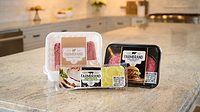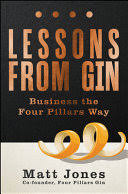Changing the Face of Packaging

Paper used in food service relies on natural polymers, biopolymers and biofilms to hold up against oil and grease. Image courtesy of Pixelle Specialty Solutions

PFAS-free OGR barrier papers can be used in a wide variety of food and beverage applications, including freezer wraps and pizza labels. Image courtesy of Pixelle Specialty Solutions

The packaging industry is going through a sea of change. Plastics have dominated the industry for decades because of their low cost and versatile functionality, but mounting public pressure to make packaging more sustainable is driving a widespread transition to new materials. With increasing concerns about nonrenewable resources being depleted and non-biodegradable materials filling up landfills and littering oceans, consumer brands are seeking new opportunities to replace plastic packaging with paper.
Many brands have already made ambitious commitments to transition away from plastics in favor of fiber-based materials that contain recycled content and are recyclable, reusable or compostable. Paper is a relatively low-cost, readily available solution that can already meet this goal, which is why more brands are looking to paper as an attractive alternative to plastic. Paper has a high recycling rate, is biodegradable and is a renewable resource when harvested from sustainably managed forests. Although making the shift away from plastics may come with some technical challenges, the change represents a substantial opportunity for innovation and growth.
In the transition away from single-use plastics, some packaging markets are moving faster than others. Tertiary packaging used for bulk and transporting products are rapidly switching to paper. This packaging doesn’t come in contact with the actual product, so switching to paper-based materials is relatively easy to do. Changing packaging materials for dry products is also relatively easy, which is why dry goods manufacturers across many markets are increasingly switching to paper. Some segments of the food packaging industry, however, have been slower to transition to paper. Historically, plastic has been a cost-effective solution for keeping food fresh and preventing food waste, while paper-based packaging was not seen as suitable alternative.
But perceptions are changing. The movement toward more sustainable solutions has driven a wave of innovation in paper manufacturing. Today, a new generation of barrier coatings and surface treatments are redefining what’s possible with paper.
Barrier technologies have seen significant advancements over the past decade. Manufacturers have phased out the use of polyfluoroalkyl and perfluoroalkyl substances (PFAS) and are transitioning to biopolymers that can be made from agricultural byproducts. Not only do they provide enhanced paper performance, but they are also re-pulpable, recyclable, biodegradable and sometimes compostable. New barrier technologies can also be applied to achieve a variety of important performance enhancements in paper. They can be used to block moisture, resist oil and grease, prevent oxygenation, seal closed under heat and pressure, keep out harmful chemicals and more.
The Benefits of Paper Packaging Versus Single-Use Plastics
Looking purely at material performance, plastics are impressive. Plastics extend shelf life and have long been a cheap and reliable method for transporting, protecting and displaying consumer products ranging from home goods to food and beverage. But that level of performance comes with significant environmental drawbacks. Plastic packaging that can last for centuries is inherently flawed when designed for single-use applications. If big consumer brands are serious about making good on their sustainability promises, they may need to make some concessions on packaging performance.
Consumers want packaging that’s biodegradable, recyclable, compostable and sourced from renewable resources. According to a 2023 McKinsey U.S. consumer sentiment survey, 43% of respondents said the environmental impact of product packaging is extremely or very important to them. Unlike plastics, paper packaging can address these concerns. However, the number and types of coatings applied to paper determines whether it can meet every one of these objectives. Most papers are biodegradable, recyclable and re-pulpable, but achieving composability involves a more rigorous process with third-party testing.
When it comes to recyclability, paper wins over plastic by a long shot. According to data recently published by the Environmental Protection Agency (EPA), the recycling rate of paper and paperboard in the U.S. was 68% in 2022, while only 8.7% of plastics were recycled. That’s because recycling plastics comes with a number of technical and financial challenges. In addition, some plastics are not recyclable at all. When mixed with recyclable plastics, the entire packaging is considered non-recyclable. This is why most plastics thrown into recycling bins end up in landfills.
Choosing paper over plastics is a clear way for brands to demonstrate their commitment to sustainable packaging. Paper can also provide a unique look and feel to help consumer brands stand out from the competition. Paper has a special tactile quality and natural look that plastic cannot duplicate, offering greater shelf appeal and brand cachet.
Where Brands Can Make the Shift from Plastic to Paper
When people think about plastics in food packaging, they often think of grocery bags, containers, straws and cups. While these applications are good candidates for replacement, many consumer packaged goods (CPG) brands, food service companies and retail grocers are moving beyond these easily recognizable applications to target more complex packaging.
Lidding is one area where companies use films, foils and plastics instead of paper. But recent advances in barrier technologies enable paper to offer the performance needed for a wide range of lidding applications. For example, the foil lids on yogurt containers or the plastic films under the lids of ice cream or butter containers could all be replaced with paper. These PFAS-free, FDA-approved lidding papers minimize moisture and vapor transmission and seal closed under heat or pressure. They also provide excellent print performance and high dimensional stability that’s needed for many lidding applications.
Another area where companies can eliminate plastics and foils is in applications that laminate papers to less sustainable substrates. Paper serves as an attractive coated printing surface for displaying brand names, but the package still relies on other materials to provide barrier properties. Coffee grounds, for example, are often packaged in a heavy foil package that’s laminated with paper. With barrier papers that prevent origination and seal in aromas, these coffee bags could transition to a 100% paper solution.
Innovations in oil- and grease-resistant (OGR) papers also expand the potential of barrier papers beyond the usual quick-service restaurant applications. A new generation of PFAS-free OGR barriers can be applied to a wide range of basis weights and paper types spanning from candy pouches to freezer wraps and pizza labels. These packaging papers rely on natural polymers, biopolymers and biofilms to provide the necessary OGR performance while improving safety and environmental impact—offering food packaging brands endless opportunities for replacing plastics with paper.
Partnering With the Right Paper Manufacturer for Tailored Packaging Solutions
Deciding how to replace plastic packaging with high-performance barrier papers might feel like an overwhelming challenge, but brands and converters are not on their own. The right paper manufacturing partner can guide companies through the process and offer a range of off-the-shelf or custom-engineered solutions to solve a variety of technical challenges.
Some paper producers have manufacturing capabilities that extend far beyond their standard product line. Product portfolios often reflect the demands of an existing customer base, but some manufacturers work more collaboratively with customers to develop new, customized solutions. By collaborating with the right partner, converters or brands can innovate together to create new combinations of barrier technologies that bring new packaging solutions to market.
Although the packaging industry is undergoing a major transition to meet ambitious sustainability objectives, the reality is the shift has only just begun. Advancements in paper manufacturing are opening a new world of opportunity for more sustainable packaging design. By working together, brands, converters, packaging companies and paper manufacturers can change the face of packaging.
Looking for a reprint of this article?
From high-res PDFs to custom plaques, order your copy today!












